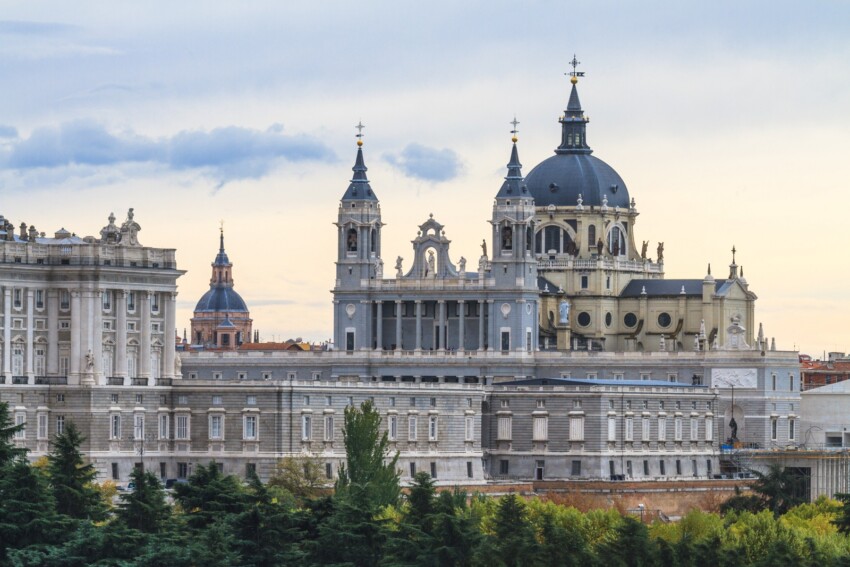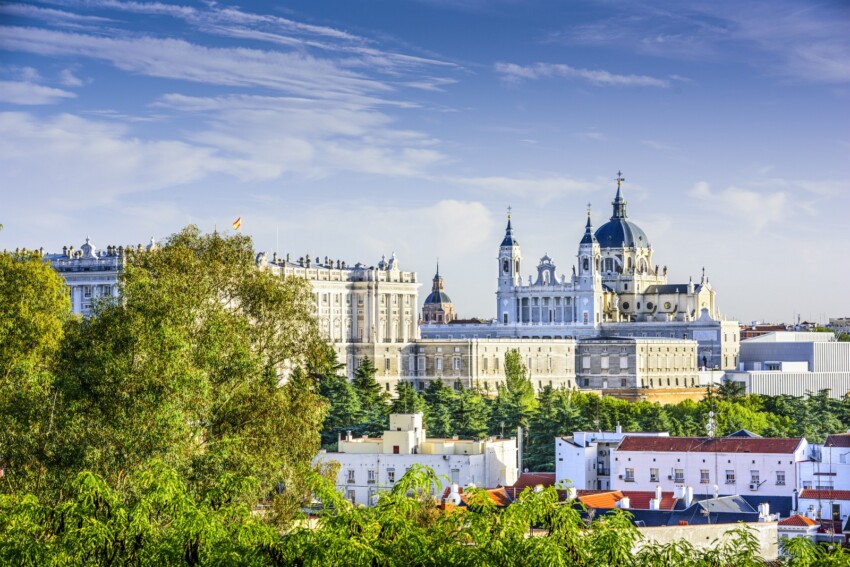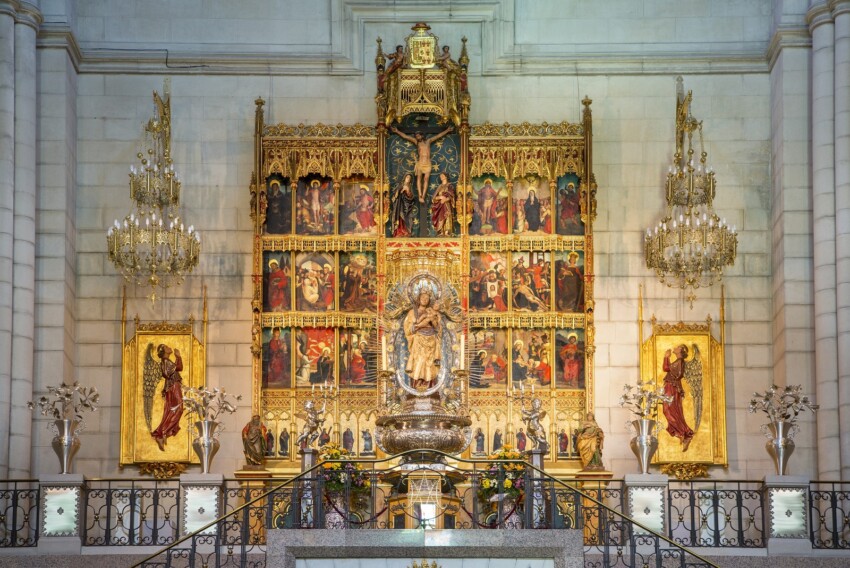
Only open to the public for some 20 years, the Almudena Cathedral is the main church of the archdiocese of Madrid and one of the most visited churches in the city.
Although its official inauguration is so recent, the history of the Cathedral of Santa Maria la Real de la Almudena – this is its full name – goes back over a century. In fact, it took more than 100 years from the laying of the foundation stone to its completion, and the first project for the construction of a cathedral in Madrid dates back as far as 1518.
The result of the different plans that followed in the construction of the church, of rethinks and modifications during the course of construction is a curious mix of architectural styles that divides visitors into two categories: some find it magnificent, others find it distasteful.
The unanimous opinion, however, is that Madrid Cathedral deserves to be visited for its uniqueness and for the fame it has, rightly or wrongly, earned.
To recount in detail the history of the Almudena Cathedral would be a bit too long. There have been many setbacks over the centuries that have slowed down the construction of the church and sources are discordant in tracing the historical evolution of this building.
One certain date is 1883, when the first stone was laid, but already two years later the church project was changed to a more ambitious one. Perhaps too much: the donations received for the building of the church proved insufficient and the work dragged on for years without completion.
The situation was further complicated by the outbreak of civil war and work only resumed decisively from 1950 onwards, with numerous modifications to the original project to meet the aesthetic standards that had changed in the meantime.
The Almudena Cathedral was officially inaugurated on 15 June 1993 by Pope John Paul II during his fourth trip to Spain.
It was an exceptional event: for the first time in history, the pope travelled specifically to consecrate a church outside of Rome. It can certainly be said that Madrid Cathedral, like Rome, was not built in a day.

The exterior of the neoclassical-inspired Almudena Cathedral harmonises perfectly with the splendour of the surrounding buildings, first and foremost the sumptuous Royal Palace.
This does not prepare tourists for the more sober neo-Gothic style of the interior, with numerous contemporary details that betray the church’s recent construction. Some visitors complain about the lack of a long tradition, which one would expect to find in other famous European cathedrals; others find the paintings on the stained glass windows of the apse aesthetically dubious.
Interesting is the Cathedral Museum conceived as a journey through ecclesiastical life through the seven sacraments. Inside are the statues of Our Lady of Almudena and Saint Isidore the Farmer. Also not to be missed is the Neo-Romanesque style crypt, completed in 1911.
You can climb to the top of the cathedral to enjoy a panoramic view of Madrid. Leaving the cathedral, turn the corner onto Calle Mayor and a short distance away you can see the remains of the first church in the Spanish capital, itself built on the remains of an earlier mosque.

If you are at Madrid’s Royal Palace, getting to Almudena Cathedral is straightforward: turn around and you’re there! Otherwise, you’ll have to get to Plaza de la Armeria, located along Calle de Bailen. The nearest metro stop is Opera, at the intersection of lines 2 and 5. The Ramal line, or Line R, also stops at Opera, a train that connects the Opera and Principe Pio stations.
If you are in the city centre, you can also reach the Almudena Cathedral on foot: from Puerta del Sol just walk a little more than a kilometre south-west along Calle Mayor, and you will reach your destination in about 15 minutes.
The Almudena Cathedral is located southwest of the centre of Madrid, in an area not overly dense with hotels. The best area to stay near this beautiful church is Plaza de San Miguel, which is only a few hundred metres away. However, this area is rather crowded and noisy, especially at night. If you prefer peace and quiet, move south to Calle de Segovia, bordering the La Latina neighbourhood; it must be said, however, that here you will be slightly away from the metro. Nothing irreparable, but you will have to budget for a 10-15 minute walk each time.
The Almudena Cathedral is located in the centre of Madrid, specifically in the Austrias area, a few steps away from the Palacio Real. It can be reached by bus and metro (L2, L5, R).
City Card allow you to save on public transport and / or on the entrances to the main tourist attractions.
